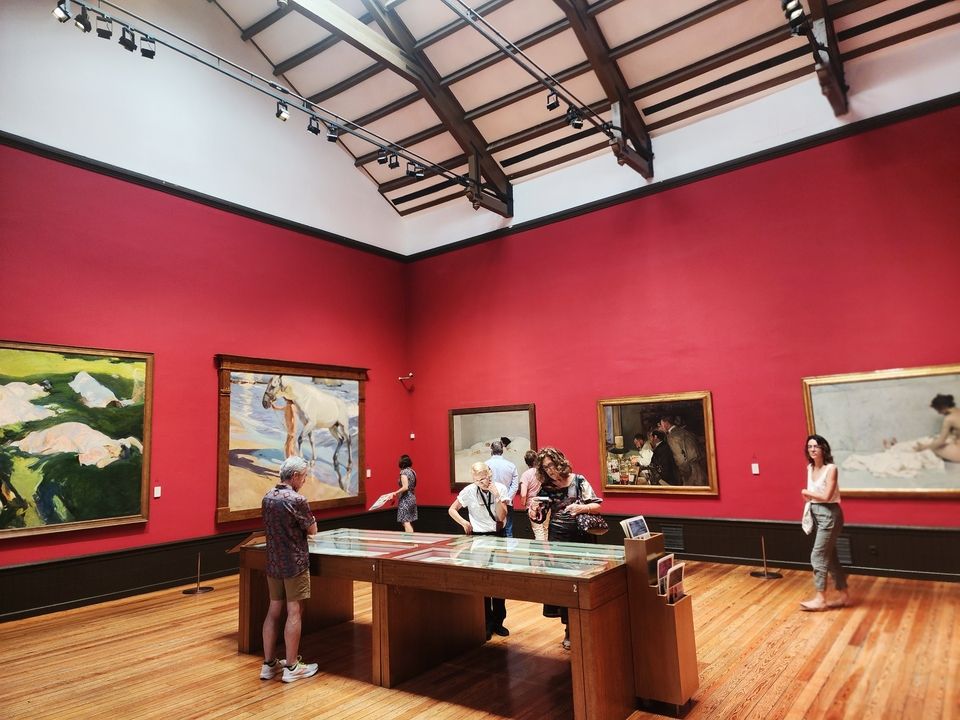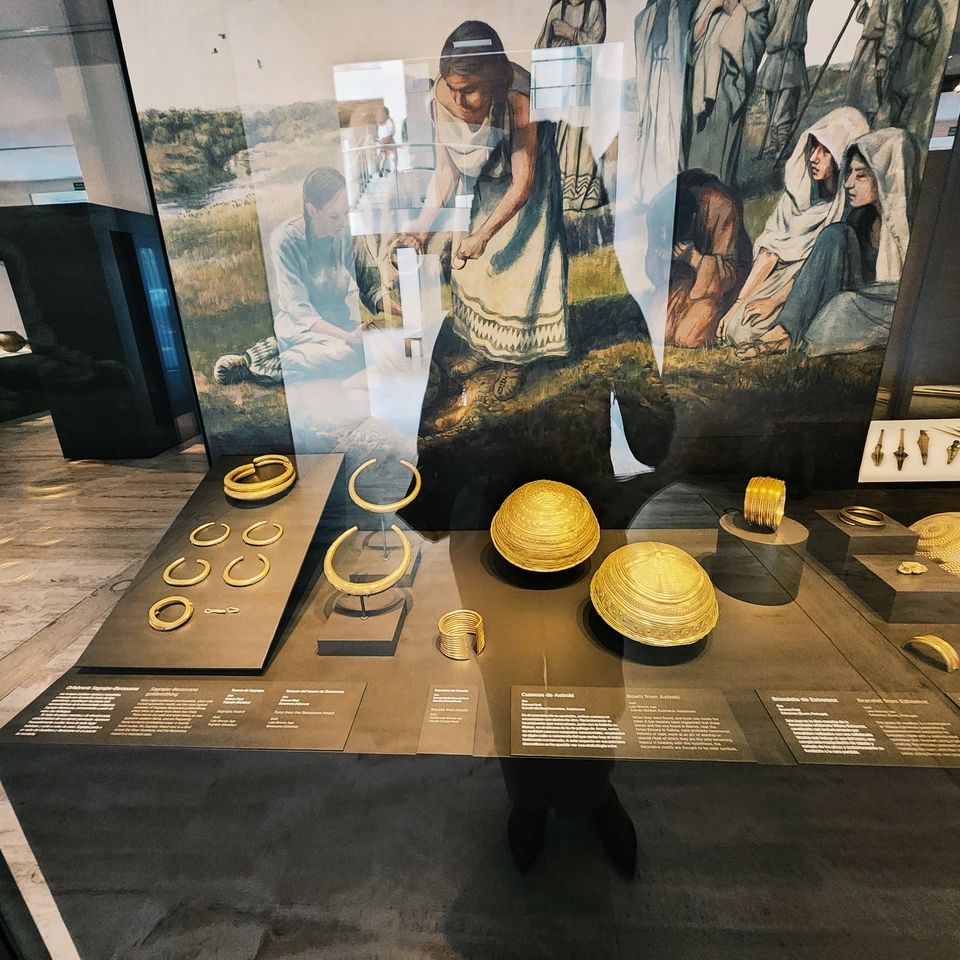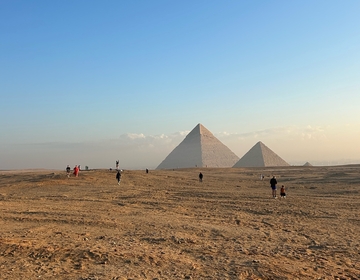Museums In Madrid
Museum’s Purpose
Museums are living places that exist to educate. Whether that is to educate us about the past or to teach us about a specific topic, they are precious and necessary gems in society. I know that museums can be tedious and overwhelming, and I personally can only spend a few hours there; however, I do enjoy them, and I often find myself enlightened once leaving. Madrid has a vast selection of museums to choose from. I had the ambitious goal to visit all of them. Sadly, that was not achieved, but I did see quite a few. Here, I will mention ones that are definitely worth visiting, some that I have mixed feelings towards, and others that should be skipped entirely.
I have a biased set of criteria to determine if a museum is worth visiting. Based on a scale from 1-5, 1 being the lowest and 5 the highest, the categories are:
1) Accessibility- Is the museum easy to get to using public transportation?
2) Layout- Is the museum easy to follow? That way I’m not asking security every five seconds for directions.
3) Dual translation- I know this may sound slightly ridiculous, as someone who speaks good Spanish; however, English in museums isn’t just for native English speakers, but for everyone in the world. English is the second most spoken language and if museums are for public consumption, then the information should be presented in both the language of the country and the common language of the visitors.
4) Did I learn anything? - Did the museum leave me feeling enlightened?
5) Rest- Museums require a lot of standing and reading. Having a place to rest the feet can help visitors stay longer.
Must Visit
Museo de Historia de Madrid
This museum left me in awe. If you have no idea why Madrid is Madrid or how it became such a huge city, this is the museum to visit. It begins with the history of the founding of the city, and how it has expanded over the years. It is easy to follow along with many portraits, maps, blueprints, and drawings of the city. The other floors teach about the history of the people; their dress, likes, dislikes, how they influenced the world, and how they were influenced.

Accessibility: 5, located in Tribunal with multiple metro lines and buses passing by. It is also free to enter!
Layout: 5, crystal clear.
English: 5, everything had dual translation.
Learning: 5, learned a ton, and everything was presented in an attractive, yet simplistic manner.
Rest: 5 ,lots of places to sit. Benches, chairs, and even an outdoor garden to sit and enjoy. Albeit the outdoor garden is next to a highly busy pedestrian area, so it’s not that peaceful.
Museo Naval
If you want to learn how Spain was able to conquer almost half the hemisphere, then this is the museum to visit. Spain's naval power allowed it to obtain world dominance for a moment in history, having conquered land in the Americas, Asia, and a little bit of Africa. At this museum, it goes through all the naval history of Spain, offers free audio, vividly painted portraits of notable captains, and even impressive naval artifacts.

Accessibility: 5, Extremely accessible, it is located on Paseo de Museo, which is very central.
Layout: 4, I did have to ask for directions once or twice and found myself going in circles at times.
English: 5, most of the featured artifacts had English translations next to the Spanish but there was also a free downloadable English audio guide.
Learning: 5, learned a lot about boats and how impressive Spain was and how important they were in the age of exploration.
Rest: 5, lots of places to sit as well.
Museo Sorrolla
Sorrolla was a famous Spanish impressionist painter who excelled in painting landscapes, daily life, and portraits. His ability to capture light in nature can leave visitors staring at his portraits for hours, which it did to me. This museum is one of my favorite places to visit in Madrid. Not only does it have a beautiful garden in its entryway to welcome visitors, but the museum was Sorolla’s home/studio. I appreciate this museum because the visitor is fully immersed in Sorolla’s life; his likes, dislikes, and who his beloved muses were.

Accessibility: 5, located in the Chamberí neighborhood, which is well connected by buses and metros.
Layout: 5, very simple, it is basically a house tour with the walls decorated with his famous works.
English: 5, every painting has a dual translation.
Learning: 5, I didn’t leave as a Sorolla expert, but I did leave feeling more informed than when I had entered.
Rest: 4, since the museum is small, it can take less than an hour to see everything properly, so there isn’t a real need for places to rest. There were areas to sit, but not a lot. Most of the sitting takes place outside of the museum in the garden.
Can visit or Pass
Museo Cerralbo
Inconspicuously located next to Plaza de Espana is Museo Cerralbo. This is home to a former Marquis and hosts all his collections. If there were ever a time when somebody wanted to see how people lived in the 19th century, this would be the place. Upon entry, the visitors walk the entryway for where horses and carriages used to disembark guest. Between the tapestries, paintings, and gaudy decorations, the museum just breathes luxury and slight chaos. Every room is decorated to an intensity that can be an eyesore. Also, with all the objects, it can be hard to know where and what to focus on. Audio guides are offered in English that focus on specific pieces of interest, which were helpful.

Layout: 2, the audio guide directed me which way to explore the museum, but without it I would have been winging it.
Accessibility: 5, very centrally located, by Plaza de España and Palacio Real.
English: 3, without the audio guide, I would have found it hard to learn or understand anything.
Learn: 2, I learned how rich this family was, but also that they were kind of hoarders.
Rest: 2, not many places to sit because pretty much all the furniture was part of the museum.
Museo Arqueológico Nacional
Archaeology isn’t a subject that always piques my interest and honestly, I found this museum to be a tease, because there are all these beautiful objects, and yet I couldn’t touch them!

But in all honesty, this museum is huge. It would take, in my opinion, three days to really enjoy, read, and visit everything. The vast amount of information on different time periods; Greek, Roman, and Iberian left me feeling overwhelmed.

Layout: 2, too big to have one designated way to view the whole museum.
Accessibility: 4, there is a bus that stops in front of the museum but the closest metro stop is about a ten minute walk.
English: 5, museum contained dual translation for all items.
Learn: 2, this may have been my fault because I didn’t concentrate on one area. Next time I would go back and stay in one time period.
Rest: 5, plenty of places to rest.
Can Skip
Museo de Romanticismo
If you are not in love with the period of Romanticism, then you can skip this museum. It offers an extensive collection of Romanticism portraits, drawings, sculptures, and furniture, while also giving a glimpse of daily life of the 18th century. The only highlight of the museum was the garden in the back, which was tiny, intimate, and tranquil. Four separate tiny, pebbled paths converge in the center where a large marble fountain awaits visitors. Four benches line the perimeter of the garden, inviting visitors to stop, breathe, relax, and enjoy the hidden oasis that this garden offers.

Layout: 4, the museum is tiny and there’s only one direction to go. The staff made sure all visitors went the right way.
Accessibility: 5, very centrally located.
English: 0, none of the works mentioned had dual translation.
Learn: 1, I learned that there was a beautiful garden nearby.
Rest: 0, since this was a house, there were limited places to sit. If there was a bench, chair, or couch, it was either part of the museum or for the staff.
Museo de America
This museum's mission is to educate about the culture and history of the America’s. It hosts artifacts from different ethnic groups and provides the chronological history of Spain's colonization.

Layout: 5, easy to follow
Accessibility: 3, a little hard to get to because there isn’t a direct stop near the museum. From either the metro or bus stop, it is a 10 min walk.
English: 0, hardly any of the artifacts had dual translation and their website that was supposed to have dual translation was not working when I visited.
Learn: 2, a lot of information, I did leave feeling that I had learned more about the history of the indigenous people.
Rest: 1, Not many places to rest even though the museum was big enough to be able to place a few benches or chairs.
Takeaway
Of course, I visited many more museums than just the ones mentioned above, including the iconic ones such as Museo de Prado, Thyssen, and Reina Sofia. Here, I wanted to mention ones that sometimes do not get as much attention .
Related Posts

Who Runs the World? Pharaohs.
Running the Pyramids Half Marathon in Cairo, Egypt Egypt and a half marathon? Let’s run it back—literally. I had the opportunity to travel to Cairo, Egypt, to run the annual... keep reading

Copenhagen Cosplays the North Pole
A Winter Weekend Guide If you’re searching for the perfect winter weekend getaway while studying abroad, Copenhagen deserves a spot at the top of your list. While the city is... keep reading

Let’s Moroccan Roll
A 4-Day Morocco Getaway from Madrid Morocco has become an increasingly popular destination for students studying and working abroad, and after spending four days there, it’s easy to see why... keep reading











